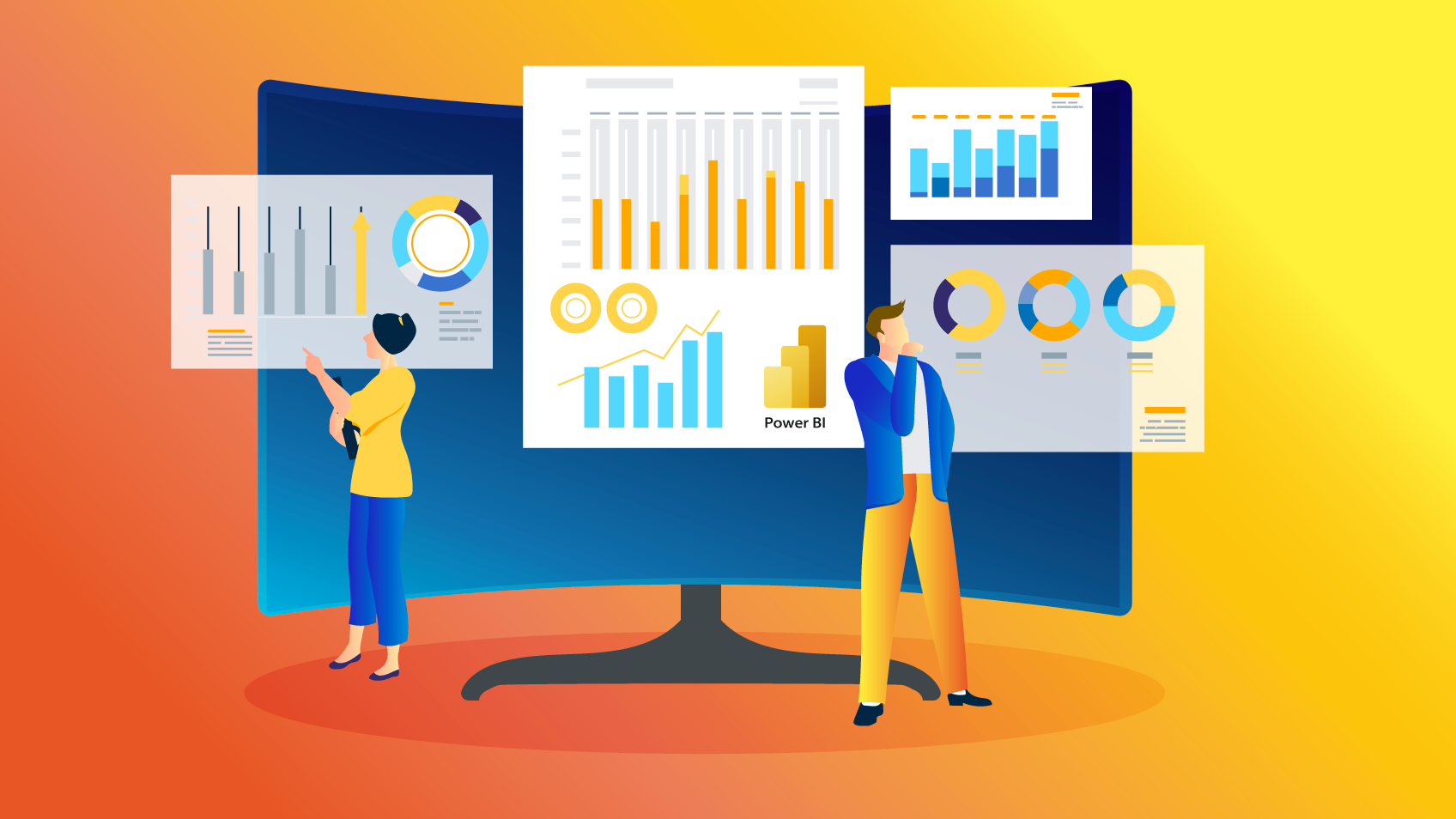Data is an asset that has become an essential aspect of business. It can be used to either make or break a business. Power BI, Microsoft Fabric and other tools that are powerful are used by businesses to unleash the full potential of their data. These platforms form the backbone of business analytics and when they are connected to Azure Data Factory become an unstoppable powerhouse.
Power BI – Your Business Intelligence Companion
Power BI is a tool for business intelligence from Microsoft that enables organizations to see their information and share information. Power BI allows users to build interactive dashboards and reports and transforms raw data into actionable information.

Power BI can be tailored to meet your specific needs regardless of whether you’re starting out or are a big enterprise. It seamlessly integrates with a variety of data sources that make it simpler to combine data from different platforms and databases. With its intuitive drag-and-drop interface even non-technical users are able to quickly produce meaningful reports and analyses.
Power BI’s platform supports instantaneous data processing. This means you always have current information. It comes with a range of graphs and visualizations that allow you to display data in the most digestible and appealing way. The ability to collaborate and share reports with colleagues boosts decision-making and creates a culture of data-driven decision-making within your business.
Microsoft Fabric Weaving Data Excel
Microsoft Fabric is the core system that connects and orchestrates data across various Microsoft services. Fabric is the thing that weaves data into a cohesive entity that can be utilized by companies.
As companies deal with increasing the volume of data they have to manage, Microsoft Fabric provides the base for data consistency and integrity. Microsoft Fabric works with a broad range of services from Azure Data Lake Storage, Azure SQL Data warehouse to Power BI. This integration ensures that data is flowing smoothly and that information can be drawn from multiple sources.
Microsoft Fabric’s capabilities for data transformation are a great example of its versatility. Make use of it to cleanse and prepare data for analysis. Additionally, you can use it to ensure that your data is compliant with your organization’s policies on data governance. Microsoft Fabric assures you that your data is correct and reliable, ready to be analyzed.
Azure Data Factory: The Gateway to Data Transformation
Azure Data Factory is another essential component in the modern business intelligence landscape. This cloud-based service enables you to schedule and manage data-driven processes. Azure Data Factory provides meaningful information through the orchestration of data movement and transformation.
Azure Data Factory’s versatility in connecting to different data sources is one of its primary advantages. Your data can be integrated effortlessly, whether stored on your premises, in the cloud or both. This will give you complete visibility of the whole data ecosystem, regardless of where your data is. It supports batch processing, stream data in real-time and large analysis of data, making it suitable for a variety of use situations.
Azure Data Factory offers a visual interface that simplifies the process of creating data pipelines. Even if you are not a programer It is simple to build the schedule, monitor and control of data pipelines. Business users can manage their data integration process and opens the door to self-service data preparation.
Power BI with Microsoft Fabric, Azure Data Factory, and Power BI
If Power BI and Azure Data Factory when combined together, they create a formidable trio that will enhance your data analysis capabilities. Here’s how they synergize:
1. Data Integration: Azure Data Factory is able to connect with various data sources. This ensures that all the data you own are available. This data integration capability feeds Microsoft Fabric which orchestrates data across multiple services. This ensures that your data has been properly organized, cleaned, then it’s ready to be used in Power BI analysis.
2. Data Transformation: Microsoft Fabric plays a vital part in the process of data transformation by allowing you to modify your data in order to satisfy your requirements for analytical analysis. Fabric will ensure that your data is ready for insights when it comes to cleansing or changing data.
3. Data Visualization: Once your data has been refined and ready, Power BI takes over. It enables you to create visually appealing dashboards and reports which make complicated data easier to understand. You can share these information with your team, encouraging decision-making based on data.
4. Scalability: Azure Data Factory can adapt to growing numbers of data. The combination of Power BI with Microsoft Fabric will make sure that your data is stable and reliable even when your business expands.
5. Real-time Insights: With real-time data processing capabilities, Power BI and Azure Data Factory offer up-to-date information which are essential for agile decision-making.
Also, you can read our conclusion.
The business intelligence market is evolving rapidly, and in order to remain competitive, companies must harness the power of information effectively. Power BI, Microsoft Fabric and Azure Data Factory are a powerful trio that will help you take your business intelligence to new levels. This trio will enable you to create stunning visuals, keep the consistency of your data, or simplify your workflows for data. Take advantage of the power of business intelligence, and unlock the potential of your data.